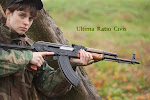Had a little incident last night. This morning, actually. Scared the crap out of me, even though I was pretty sure even at the time that there was nothing to be afraid of.
Long-time readers will recall that last winter I had two, er, fire-related incidents. The first isn’t technically relevant, since it only involves something very stupid I did involving a whole bunch of propane. The next was more of a legitimate learning experience: You need to heat up your stovepipe to get a good draft going, and also to keep (highly flammable) creosote from building up in there. Otherwise, sooner or later you’ll get a chimney fire and that’s bad.
Since that second incident, I’ve grown leery to the point of paranoia about starting a fire in my own living room. Look, I’m from Detroit. I never heated with wood before last winter, and it turns out there are some twists and cul-de-sacs you really should apply yourself to learning.
Anyway: Since the chimney fire I pay very close attention to the temperature indicated by that stovepipe thermometer.
And I like to see it no more than scratch the lower part of the “best operation” range. More than that and my blood pressure starts to spike. I’m aware – intellectually – that people heat these things until they glow. I don’t.
So anyway. Get on with the story, Joel. Winter pretty much officially arrived yesterday, with cold and threatening overcast and really strong wind. Had the fire going in my new stove all day, and spent some of it experimenting with different arrangements of firewood and dampers, learning how the stove likes to work best. I’ve got the thermometer on the pipe about six inches above the collar, and at no point during the day did the indicated temperature get as high as 300 degrees.
I was up later than usual, but around midnight I was definitely ready to go to bed. I had a juniper log on the coal bed and it had lots of life in it. Throttled back the damper and watched the fire settle down. Then I got to wondering what would happen if I put a second log on: Would it slowly burn over hours? The outside temperature was already in the low teens. Yeah, give it a try.
Second log caught fire right away and burned very enthusiastically, which wasn’t in the plan. Pipe temperature started to climb. 300. 350. Stabilized around 350. Okay, I could live with that. Both dampers were as closed as they could be, which isn’t very closed, but the fire had the bit between its teeth now. It really liked that second log. I’m sitting with a book in my hand, pretending to myself that my whole attention isn’t riveted to that thermometer. No way I was going to bed now.
And then the indicator started to visibly move. Upward. It climbed a hundred degrees in a minute. I flashed back to that very unpleasant morning in February, and my pituitary helpfully decided that what this situation needed was six or eight gallons of adrenalin in my bloodstream. That didn’t help with the critical thinking skills, which would have been more appropriate. I kept telling myself the pipe to the ceiling is all of five days old and the rest is freshly cleaned, and there’s no way I was looking at a chimney fire. This, I told myself, is normal. The roof will not, can not, catch on fire from this. It didn’t help.
At no time did the stove or the pipe or the cabin seem to think this was a bad thing. In fact you could say that for the first time everything was working great. As the night had progressed and the outside temperature crashed, the small fire I’d maintained all day became less and less adequate. Now at last the indoor temp rose – though really not all that much. Which tells me that what I did last night is probably what I’ve been supposed to do – but I didn’t like it at all.
The indicated temperature stabilized at 450, when I’d already decided if it goes to 500 I’m expending a fire extinguisher. Then it slowly dropped back to 350 and stayed there. I finally went to bed a little before 2, but didn’t sleep well.
There’s a tag right on the stove’s door that says, “if the pipe collar glows red, you’re overfiring the stove.” Ya think? For the record the collar didn’t glow, nor probably even came close to doing so. I’m pretty sure last night’s “emergency” was all in my head.
I could use some expert advice here. Was that normal?

















































Yes. Load the stove and turn you dampers down, not completely closed as the fire needs oxygen, and you’ll be fine. Seems you set the dampers just right last night.
Joel, The stove manufacturer seems to think you shouldn’t worry unless the pipe collar is red. A dull red color is approximately 700 degrees. Cherry red is 800 degrees. Just red is 850. I don’t think 450 to 500 degrees is anything to get real excited about.
Yeah, what Stephen said. Try to not worry so much. A warmer pipe means less buildup. I heated almost exclusively with wood for a few years and managed to catch the house on fire just once with no non-repairable damage. The cat was never the same after that, though…
Shoot, my landlord isn’t really happy if the flue temp drops _below_ 500. Personally, I think that’s overkill, but his eyes are apparently sensitive to IR and he likes to read by the glow of the cast iron stove.
Seriously, I usually run mine between 450 and 550, then let it burn down to a nice bed of coals when it’s ready for the next load. Been doing it that way for 9 winters now and we haven’t had a chimney fire yet. I was always glance at the temp when I go by, but truthfully the real warning signs have been the mild roar of air getting sucked in, and the occasional dull red glow.
I think you have been over cautious and just finally hit the sweet spot last night.
Pingback: Winter is time to get it together « Dio's Workshop
Re: Creosote
Cool, slow burning fires allow the creosote to condense on the inside of the pipe, which is what burns in a chimney fire.
Hot, fast burning fires melt the creosote, which runs down the inside of the chimney (which is why the chimney is stacked with the little ends DOWN), and burns in the fire.
Consequently, a roaring fire prevents (some) creosote buildup. Burning hardwood also prevents creosote buildup, since there is less pitch in the wood.
At least, that is what I have read, here and there.
450 isn’t very hot. Even the chimney thermometer people put it in the “best operation” range. Save the fire extinguisher for over 700. If you can’t keep it below 700 with dampers shut, there is a real problem.
I’d view the fact that the temp went up quickly and stabilized as a good thing – no need for you to watch all the time and worry about it creeping up. Once you’ve set the fire and dampers, and given it 20-30 minutes to settle down, it seems like you don’t have to keep checking it.
-s
Hey Joel,
Honestly I think being conservative with your burning temps may be a large part of why you had a chimney fire in the first place. The hotter the fire the more complete combustion is and consequently the cleaner and more efficient it is. This has the nice side benefit of releasing more heat per log since you’re burning things like creosote that would usually go up in smoke. Hotter fires also pull in more air (since you’ve got a stronger vacuum from the chimney) which is, I suspect, why that second log burned so well.
In my experience those stove thermometers have a tendency to “stick” when the bimetallic strip rubs against the surface. Giving them a little tap always seems to change things a bit. May explain why you had such a sudden rise. If you’re really worried you could get a second one and stick it to the stovepipe near the roof. Assuming they’re both recording accurately I’d think the second should always read lower than the first and that a chimney fire would be the only reasonable explanation for the opposite.
Great blog, BTW. Just found it about a month ago and reading through the archives has kept me well entertained.
-B
Because you had been keeping your fire so low, I suspect you were beginning to get a creosote film, which burned off when things finally got into the normal operating range (hence the brief spike). I’d shoot for middle to high on the safe temp range myself.
It was -9º here yesterday morning, kept the wood stove going all day. This morning was clear up to 2º, & the sun is out full strength which is good ’cause the rainwater tank outlet is frozen & we need some water.
Stay warm, Joel! *<|:-)
And lest I insult your intelligence again; from the same article that I learned about building the fire upside-down…
“Wood fires burn best in cycles, so it’s not a good idea to add a log every hour to attempt to produce an even heat output. The trouble w/that approach is that a single log will not burn cleanly because the firebox cools off too much & flaming combustion cannot be sustained. Instead, you need to add at least 3 pieces–& preferably more–each time you load so that the heat from one log burning can ignite & sustain flames on the next log, and so on.
“Another thing to consider is that if you have thermal mass built into the area near the heater (dense building materials such as concrete, brick or stone) these materials will absorb some of the heat from the start of a heating cycle & release it later as the fires subsides. Thermal mass & cyclical firing work together nicely.
“Burn hot, bright fires. Your fires should actively flame until the wood is reduced to charcoal. If there are no flames, half the wood is being wasted as smoke [& potentially creosote]. In mild weather, you can build brightly flaming fires that don’t overheat the house by splitting your firewood finely & using 3 or more pieces each time you load.”
Mother Earth News, Oct/Nov 2008
Which reminds me…I have to go make some of that small wood. Ciao!
A low, slow fire is bad enough with hardwood. Juniper has a lot more pitch and creates more creosote. What everyone says is good advice. Hotter (within reason) is better, especially with softwoods. As a general thing, 450 degrees or so is the minimum I would run it.